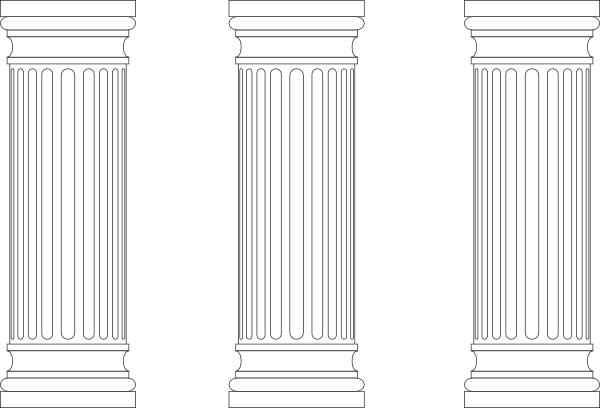

The Corinthian column has a base to support the shaft. Its looks are somehow similar to the Ionic column when it comes to the base and the shaft. Among the three columns, the Corinthian column is the last one that was developed. It originated in Corinth, a city-state in Greece, and was present in ancient structures as early as 450 BC. Corinthian ColumnĬorinthian columns are probably the most sophisticated among three columns. Its capital has two opposing volutes or scrolls, which is more fancy compared to the simple circular capital of Doric columns. Like any other Ancient architectural order, the main distinguishing factor of the Ionic column is the capital. Then the shaft features a thinner and taller body with twenty-four flutes. Unlike Doric columns, Ionic columns have a base to support the shaft. This Greek column shows some similarities with other columns, as well as differences. The Ionic column originated in 600 BC in Ionia – an ancient region on the coast of Anatolia. One other factor that separates this column from the rest is it doesn’t have a base. Similar to other columns, it also has flutes surrounding it, usually twenty flutes. Its shaft is the shortest among the three columns, and a bit wider. This type of column is known for its simplicity, mainly because of its simple circular capital. It originated in the western Doric region in Greece and was present in some structures as early as 700 BC. The Doric column is the simplest and oldest style of Greek columns. Now we know the parts of a column, let’s look into each of the three types of Greek columns. Each column has a different feature, which we will elaborate further in the article. Then we have the capital at the top this is probably the most distinct part of the column to distinguish the difference from each other. The shaft is the body of the column, which usually is surrounded by flutes. Starting from the bottom of the column, we have the base, which supports the shaft of the column. Each of these parts plays an essential role in keeping the column stable, durable, and unique. The main distinguishing factor of an architectural order is the column because it is the most visible element.Ī column has three parts – mainly the base, shaft, and capital. These elements are what make up the entirety of a Greek order. The Greek architectural orders have different elements, including the entablature, frieze, cornice, column, etc. In this article, we will look into each Greek column type, what parts does a column have, and what are their attributes. Ionic columns are often used in high structures because of its tall characteristics. The Doric column looks beautiful in porches, entrance facades, and the like. Different architectural orders would best suit different structures, such as the Corinthian column would work best in high-class mansions and temples because of its sophisticated design. These columns are commonly present in porches of a house, mansion, banks, memorials, schools, and many other buildings that have a classical style. Until today, the neoclassical style of Greek columns continues to be an influence on different structures all over the globe. These styles made a significant impact on various structures throughout history.


 0 kommentar(er)
0 kommentar(er)
